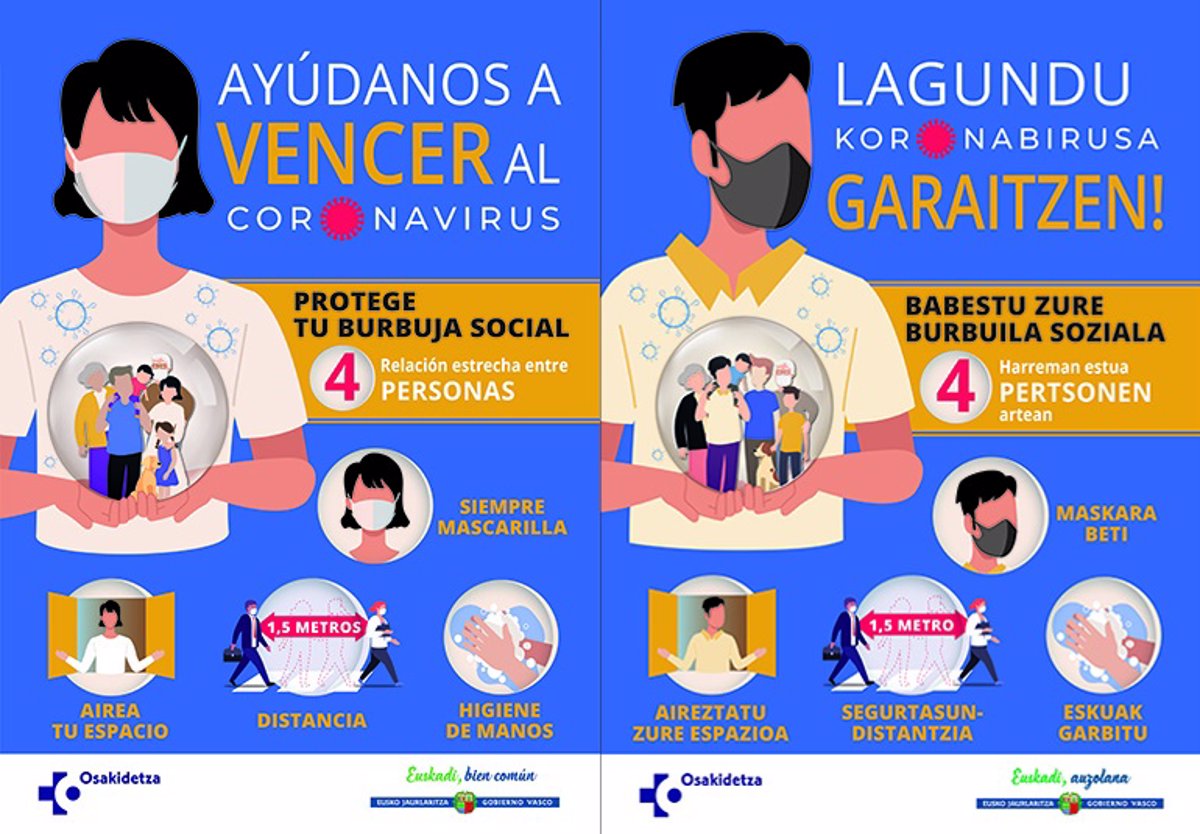The incidence of severe acute respiratory infections in the hospital network fell from 24.5 to 21.1 cases per 100,000 inhabitants
Victoria, January 24 (European Press) –
Osakidetza confirmed that the spread of the influenza virus had declined for the second week in a row, and that the incidence of covid-19 and respiratory syncytial virus (RSV) testing had also declined.
The latest Osakidetza acute respiratory infection (ARI) surveillance report (corresponding to the week of January 15-21) shows that the ARI rate in the primary care network was 562.9 cases per 100,000 inhabitants (previous week: 717.4/100,000 inhabitants) .
Influenza syndrome rates in primary schools have fallen after five consecutive weeks of increases, while bronchiolitis rates have remained at similar levels to the previous week. Of the 83 surveillance samples sent to the microbiology laboratory, 68.7% were confirmed, with 7 SARS-CoV-2 (positive rate 8.4%), 28 influenza viruses (positive rate 33.7%) and 2 VRS (positive rate) detected 2.4%).
The incidence of severe acute respiratory infections in the Osakidetza hospital network was 21.1 cases per 100,000 inhabitants (previous week: 24.5 cases per 100,000 inhabitants). Likewise, 234 SARS-CoV-2, 536 influenza viruses and 125 RSV were registered in the Pasteur Microbiological Information System this week, a figure lower than the previous week (282 SARS-CoV-2 detected). 2,664 influenza viruses and 155 RSV species. RSV.
The acute respiratory infection rate in primary care this week was 562.9 cases per 100,000 inhabitants (previous week: 717.4 cases per 100,000 inhabitants). By historical territory, the incidence rate is 436.4/100,000 in Álava, 567.1/100,000 in Vizcaya and 614.6/100,000 in Guipuzcoa.
By age group, the incidence rate is highest in the 0 to 4 year old group, with 1947.2 cases per 100,000 people, followed by the 5 to 14 year old group, with 754.6 cases per 100,000 people. Compared with the previous week, incidence rates increased among those under 15 years of age and fell among the rest of the population.
The incidence of influenza syndrome in primary care has decreased after rising for five consecutive weeks and is now 54.9 cases per 100,000 inhabitants (previous week: 76.7 cases per 100,000 inhabitants). The incidence of bronchiolitis (in children under two years of age) remains unchanged from the previous week, at 266.9 cases per 100,000 inhabitants (previous week: 263.4/100,000 inhabitants).
sentinel sample
This week, the IRA Reference Microbiology Laboratory analyzed 83 sentinel samples, of which 68.7% were confirmed. Seven species of SARS-CoV-2, 28 species of influenza viruses (15 species AH1pdm09 and 13 species AH3) and 2 species of RSV have been detected. Eleven species of rhinovirus were also detected.
The positivity rate for SARS-CoV-2 has increased, reaching 8.4% (2.3% the previous week). The influenza virus positivity rate was 33.7% (33.3% the previous week), and the RSV positivity rate was 2.4% (4.6% the previous week). The rhinovirus positivity rate was 13.3% (compared to 10.3% the previous week).
The incidence rate of severe acute respiratory infection (SARI) was 21.1 per 100,000 inhabitants (previous week: 24.5/100,000), for women 20.5/100,000 and for men 21.8/100,000.
In terms of age groups, the incidence rate is highest among people over 64 years old, with 65.9 cases per 100,000 people, followed by children under 5 years old, with 25.7 cases per 100,000 people. Incidence rates fell among children under 5 and over 44 years old compared with the previous week.
Hospital enthusiasm
The hospital influenza virus positivity rate dropped again to 25.9% (last week: 31.9%), and the SARS-CoV-2 positivity rate remained at 11.0% (last week: 11.7%). The RSV positivity rate dropped to 9.5% (from 10.7% the previous week) and the rhinovirus positivity rate was 15.3%.
The microbiology service of the Osakidetza Biodiagnostic Network detected 234 SARS-CoV-2, 536 influenza viruses and 125 RSV species in the system this week. Of the 536 influenza viruses detected this week, 340 were non-subtype A, 47 A(H3) and 149 A(H1)pdm09. Since week 40 last year, 4,896 detections of influenza viruses have been recorded, including 4,885 (99.8%) of influenza A viruses and 11 (0.2%) of influenza B viruses. Of the 1,474 cases of subtype A viruses, 270 (18.3%) were influenza A viruses. (H3) and 1204 (81.7%) A(H1)pdm09.
According to the Osakidetza Biodiagnostic Network Microbiology Service, in December, 35.3% of PCR-positive SARS-CoV-2-positive samples have been sequenced so far. All were Ómicron variants, with the most common lineages being JN.1 (80.3%), BA.2.86 (4.0%), JD.1.1 (3.5%) and BA.2 (3.2%).
In the third week of the year, the seven-day cumulative incidence rate of Covid-19 among people aged 60 or over was 23.7 cases per 100,000 inhabitants (previous week: 29.3/100,000), 26.2 for men and 21.7 for men in women.
According to data obtained by the Osakidetza Hospital Situation Indicator, 98 people have been hospitalized with COVID-19 in Euskadi this week (compared to 110 the previous week), including 53 men and 45 women. 87.8% of hospital admissions are over 60 years old.
In turn, 18 new confirmed cases of nursing home use were reported this week (up from 29 the previous week). There are 15 affected centers, a decrease of eight from the previous week.

